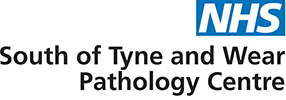Bone sample
Code:
TISSUE
Sample Type:
No more than a 2cm3 section in either:
An irradiated container with saline and glass Ballotini beads
or
A CE marked leak proof sterile container
Transport to laboratory as soon as taken.
Ref Ranges/Units:
N/A
Turnaround:
2 – 5 days
Special Precautions/Comments:
N.B. Collect specimens before antimicrobial therapy where possible.
Sending multiple samples is advised as infection can be occult, and in order to assist the distinction between genuine isolates and contaminants.
Interferences: Antibiotics may affect growth of certain bacteria.
Method: The investigation of orthopaedic samples involves examination of a Gram stained smear and culture for pathogens. Samples will also undergo enrichment culture. Any organisms isolated are identified using Maldi-Tof and antimicrobial susceptibility testing is performed on significant isolates. Calibration: N/A. EQA scheme: UKNEQAS General Bacteriology scheme (culture and identification). BMS MICRO EQA (sterile fluid). IQC: In-house preparations (gram stains).
Interpretation: WBC count and differential: The approximate cut off for acute prosthetic joint infection, applicable to tests taken within six weeks of most recent surgery are as follows:
- Synovial white blood cell count (WBC) >10,000 cells/µL
- Synovial polymorph percentage (PMN%) >90%
The approximate cut off for chronic prosthetic joint infection, applicable to tests taken more than six weeks after the most recent surgery, are as follows:
- Synovial white blood count (WBC) >3,000 cells/µL
- Synovial polymorph percentage (PMN%) >80%
Gram stain results will be reported as No organisms seen (negative) or Organisms seen (positive). Culture results will be reported as No growth (negative) or Organism/s isolated (positive). All positive results will be reviewed by the Consultant Microbiologist. This includes white cell count, gram stain, isolate(s) and sensitivity test results.
Additional Information:
Background information: Organisms may be introduced into the joint during primary implantation surgery, via a haematogenous (bloodstream) route or from post-operative contamination of the wound. These may cause acute or chronic infections. Fewer organisms are required to establish infection when there is a foreign body in situ than otherwise. The most common organism to cause acute infections is Staphylococcus aureus, and in chronic infections either S. aureus or coagulase negative staphylococci. Many other organisms can be acquired by either direct inoculation or the haematogenous route including other skin flora, streptococci, coliforms, enterococci and rarely anaerobes, mycobacteria or fungi.


